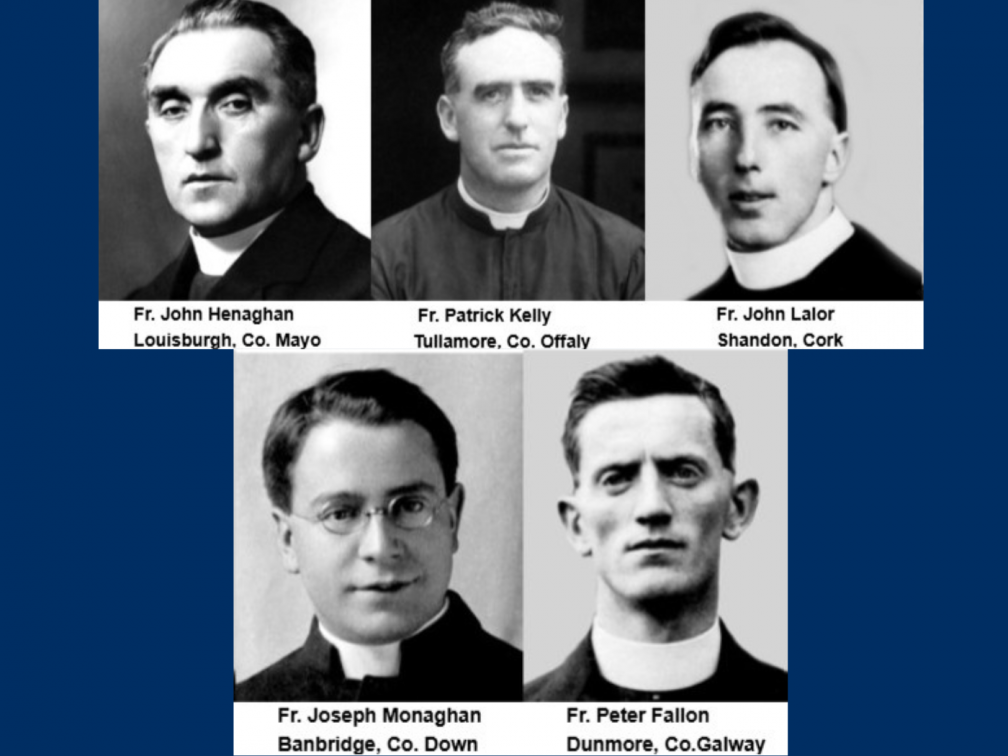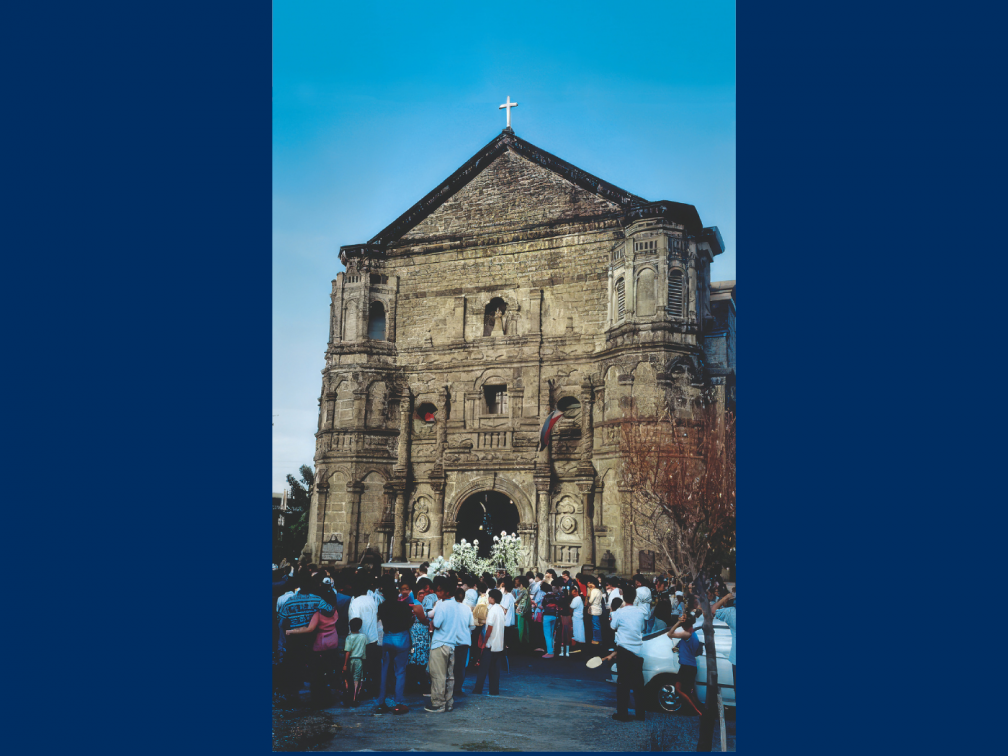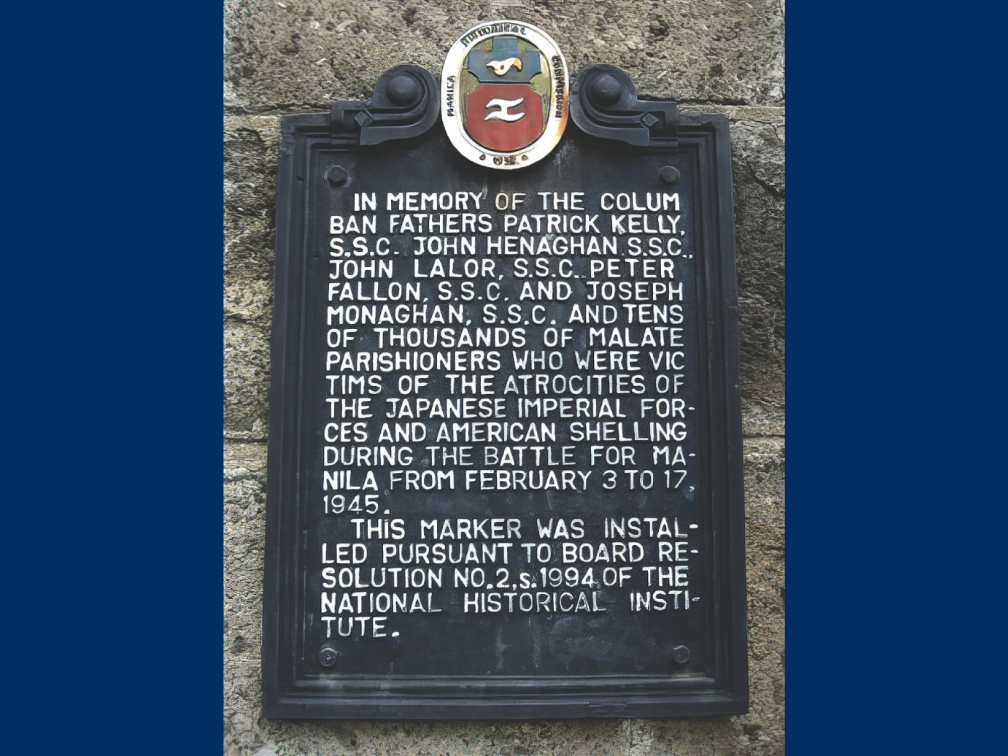The Battle of Manila lasted from 3rd February until 3rd March 1945. It was preceded by a brutal three-year occupation of the Philippine Islands by Japanese forces. Throughout this occupation, Fr. John Henaghan, who was Regional Superior, Fr. John Lalor, Fr. Patrick Kelly, Fr. Peter Fallon and Fr. Joseph Monaghan delivered both material and spiritual aid to civilians interned at Santo Tomas University and the College of Agriculture at Los Baños, as well as to American prisoners-of-war at the Bilibid and Cabanatuan camps. They also supported resistance groups and parishioners during one of the worst humanitarian crises of World War II. Their parish house in Malate served as a centre for storing food, medicines, shoes and old clothes collected by Frs. Fallon and Monaghan. These were smuggled to the prisoners by some of the 250,000 Filipino guerrillas, 25,000 of whom were female. It was a risky operation due to the vigilance of Filipino collaborators.
In June 1942, the Columbans established a temporary hospital in Malate, funded by wealthy Catholics, staffed by volunteer doctors and young people, and managed by Fr. Lalor. He also operated a store outside the Nichols Field work camp where he supplied food, medicine, and clothing to the starving and overworked prisoners-of-war while providing a critical link between them and the Filipino resistance movement. Fr. Kelly, the parish priest for the American Catholics in Manila, insisted on visiting his parishioners in Santo Tomas. He regularly challenged the Japanese on their noncompliance with international laws regarding prisoners. Despite the risks, he maintained a crucial line of communication between the internees and the outside world, often providing vital support for escapees. By late 1943, food and medicines became scarce, and prices rocketed. Fr. Henaghan struggled to fund supplies for everyone.

In September 1944, American troops under General Douglas MacArthur landed on the island of Leyte. When Santo Tomas was liberated on 3rd February 1945, MacArthur thought the war was over and anticipated a victory parade through Manila. However, the rest of the sprawling city, home to one million Filipino men, women and children, remained under the control of Japanese troops, who were about to embark on a desperate and brutal killing spree. They carried out systematic mass executions of men, women, children and members of religious orders. They inflicted unimaginable torture, raped women and girls of all ages, many of whom were mutilated or killed in the process and ripped unborn babies from their mothers’ wombs.
The Japanese sealed all the gates of Intramuros, the ancient walled city of Manila, and torched it. American shells ignited the Malate and nearby Ermita districts. Non-combatants were trapped between their oppressors and their liberators; they were as likely to be killed by an American shell as by a Japanese sniper. On 7th February, Frs. Henaghan, Kelly, Fallon and Monaghan were arrested and killed. A Maryknoll nun, who was in Manila at the time, gave a harrowing account of their deaths to Professor James T. Carroll of Iona University in New York in 1995. “The Filipino guerrillas were assisted by the Irish Columban Fathers who maintained their cover well into the war. When the Japanese discovered that they were not pro-Japanese, they nailed them to the church doors.” Fr. Lalor was working that day but was killed with 200 others on 13th February when American troops shelled the hospital.

During the occupation, the five Columbans worked courageously to offer physical and spiritual support to Filipino and American soldiers who survived the infamous Bataan Death March in April 1942 and faced disease, dysentery, starvation and inhumane treatment in the Bilibid and Cabanatuan prisoner-of-war camps. They helped American and Allied civilians interned at Santo Tomas University who were eventually reduced to eating cats, rats, pigeons and weeds to keep themselves alive. On 3rd February 1945, 3,677 of them, emaciated and half-dead, were liberated. They aided hundreds of starving Filipino people as well as 300 religious “enemy aliens” interned at the College of Agriculture at Los Baños, whose daily food intake was reduced from approximately 900 calories per person in December 1944 to about 570 in January 1945.
After the war, the Columban headquarters at Dalgan Park, Navan, received letters of gratitude from survivors who commended the courage and devotion of the five priests, collectively known as the ‘Malate Martyrs’. The US Marines conferred the honorary title of ‘Leatherneck of God’ on Frs. Henaghan, Kelly and Lalor, Leatherneck being slang for a US Marine. In 1948, the United States government posthumously awarded them the Medal of Freedom (with Silver Palm), the highest honour for non-American citizens. Although Fr. Fallon and Fr. Monaghan were not singled out for special mention, they played a significant role in the humanitarian effort. In 1997, the people of Malate erected a Pietà beside Malate church with a moving inscription, “in memory of the people of Malate who were killed during the Second World War and the five Columban priests who stayed with them and died with them”.
Thank you to the late Fr. Neil Collins, Columban historian, Dalgan, Thelma Patapat, Archivist at Singalong Archives, Manila MSSC and Dyanne Wendling, Assistant to the US Columban Regional Director.



